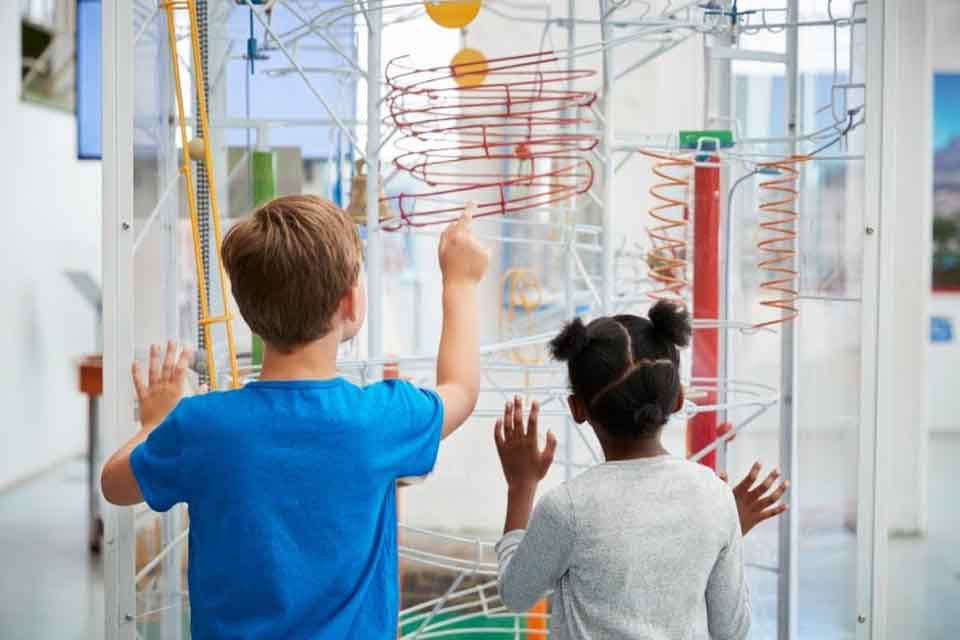Education often doesn’t come to mind in conjunction with entertainment, but that’s exactly what edutainment is—education with the goal of making learning enjoyable. In the classroom, edutainment takes the form of media, games, toys, and experiences that mix fun and learning to motivate students. Teachers also use gamification alongside edutainment to create a more fun atmosphere for students. These learning tactics ultimately lead to better educational experiences and student retention.
Edutainment Overview
What is edutainment? Edutainment, both inside and outside the classroom, helps to make learning fun. American illustrator Peter Catalanotto coined the term in the 1990s while teaching students about writing and illustration. The practice of combining education and entertainment became widespread in the United States after John Dewey, a philosopher and educator, encouraged experimental, engaging methods of teaching to promote student excitement in learning.
Today, teachers use novels, movies, interactive museums, board games, and toys to teach a specific subject or lesson. Edutainment also has applications beyond the classroom setting. Groups in the United States, United Kingdom, and Africa use edutainment to educate populations on social issues such as substance misuse, immunization, and teen pregnancy.
Mixing Education and Entertainment
Teachers can use education and entertainment together in a variety of ways, including games, toys, media, and experiences. These methods simultaneously entertain and educate students.
Edutainment Games and Toys
Introducing games throughout the school day is a great way to add entertainment to learning.
Traditional Games for Edutainment
Jigsaw puzzles are among the oldest games that entertain while teaching. They help with dexterity, spatial relations, and logical thinking. Preschool teachers often do jigsaw puzzles with their young learners, but older students can also do them to improve their memory and increase their attention span.
Chess is another game that can make learning enjoyable. Students who play chess have improved reading scores, memorization, math scores, and creative thinking, according to Best Schools. Other traditional games for edutainment include:
- Settlers of Cataan
- Risk
- Scrabble
- Stratego
Online Games for Edutainment
Aside from tangible games, online games can also create a fun learning environment. Websites such as CoolMath4Kids use video games to teach a variety of math and problem-solving lessons. Students can also visit the website for Scratch, a free programming language, to learn programming while creating their own interactive games and animations.
Legos for Edutainment
Like games, toys are another easy add to the school day. A famous case in point are Legos, a well-known construction toy popular among adults and children alike. Building models with Legos increases a student’s creativity, motor and engineering skills, reasoning, and spatial recognition. Lego models include the Statue of Liberty, Eiffel Tower, the White House, and Big Ben, among others.
Teachers can apply Lego construction to lessons in architecture, fine art, and robotics. They can also use them to add a hands-on component to lessons in engineering, history, and government.
Edutainment Experiences
Getting out of the classroom and experiencing education through physical education classes adds fun to a student’s day. Physical education is a prime example of edutainment. Students learn teamwork, physical fitness, spatial recognition, communication, and coordination while playing a variety of sports. Athletics can also be a stress reliever and provide an outlet for students to release their energy.
Another edutainment experience that gets students out of the classroom is a field trip to an interactive museum. These excursions allow students to play while learning about science or a moment in history. PlayWiseKids in Columbia, Maryland, and Please Touch Museum in Philadelphia, Pennsylvania, are two museums popular with local schools.
Edutainment Media
Educators have used film and television for edutainment since the 1940s. Shows such as Sesame Street, Dora the Explorer, and Teletubbies shifted children’s television toward edutainment.
Fictionalized movies about history, as well as documentaries, can also be powerful tools to teach students about important events while keeping them engaged.
Gamification in Edutainment
Gamification is using elements of gameplay, such as competition, scoring points, and following rules, to foster engagement. It has become a widely used edutainment tool in the classroom. For example, some educational software makes students complete one learning level before moving on to the next.
Edutainment promotes learning, while gamification rewards learners at each step. Together, they boost motivation and encourage learning.
Gamification has multiple applications. Teachers can use a point or badge system for each level of learning (both online and in person). Elearning Industry suggests that teachers reward students each time they complete a task and keep a leaderboard highlighting their cumulative rewards. Entire courses can use gamification through software such as Adobe Captivate, Articulate Storyline, and iSpring.
Make a Difference in Education at American University
American University’s School of Education online gives educators the tools they need to transform the education system. Through innovative programs and teaching methods, American University encourages teachers to make an impact on their communities. Discover how you can make a difference in education.

